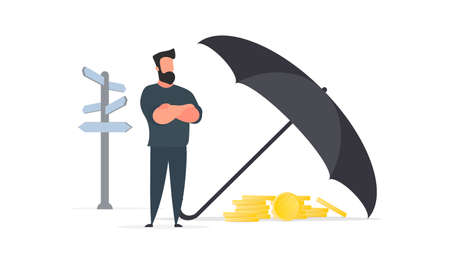1. Understanding Liability Insurance: The Basics
Liability insurance is a core type of coverage that helps protect both individuals and businesses from the financial consequences of being held legally responsible for injury or damage to others. In the United States, its not just a smart choice—its often required by law for certain situations, like driving a car or running a business.
What Is Liability Insurance?
At its most basic level, liability insurance covers you when someone claims you caused them harm, whether that’s bodily injury or property damage. Instead of you paying out-of-pocket for medical bills, repairs, or legal fees if you’re found at fault, your insurance steps in up to the policy limits.
Main Types of Liability Insurance in the US
| Type | Who Needs It? | What It Covers |
|---|---|---|
| Auto Liability Insurance | All drivers (required in almost every state) | Bodily injury & property damage to others if you cause an accident |
| Homeowners/Renters Liability | Homeowners and renters | Injuries or damages to guests or other people on your property |
| General Liability Insurance | Businesses (small to large) | Bodily injury, property damage, and some personal injuries caused by business operations or products |
| Professional Liability (Errors & Omissions) | Professionals (doctors, lawyers, consultants) | Mistakes made in the course of professional services that cause harm to clients |
| Umbrella Liability Insurance | Anyone needing extra protection beyond standard policies | Adds extra coverage above limits of other liability policies |
How Does It Work?
If someone sues you or makes a claim against you because they believe you caused them harm, your liability insurance company will investigate. If you are found responsible, your insurer pays up to the limit of your policy for damages and legal costs.
Why Is It Important?
Without liability insurance, one mistake could lead to financial disaster. Medical bills, legal fees, and repair costs can add up quickly. For businesses, even a single lawsuit could threaten everything youve built. That’s why having the right liability insurance is fundamental—it’s not just about protecting your bank account; it’s about protecting your future.
2. Common Myths About Liability Coverage
Liability insurance is an important part of protecting your finances, but there are plenty of myths that confuse what it actually covers. Let’s clear up some of the most frequent misconceptions so you know exactly what to expect from your policy.
Myth #1: Liability Insurance Covers All Types of Damage
This is one of the biggest misunderstandings. Many people believe that liability insurance will pay for any kind of damage, but that’s not true. Liability insurance typically only covers damages or injuries you cause to others—not damage to your own property or injuries to yourself.
| Situation | Is It Covered? |
|---|---|
| You accidentally break a neighbor’s window | Yes, liability covers this |
| Your car gets damaged in an accident you caused | No, not covered by liability |
| You slip and fall in your own home | No, not covered by liability |
| A guest is injured at your home | Yes, liability covers this |
Myth #2: Liability Insurance Is Only for Business Owners
Some folks think liability coverage is just for businesses, but it’s actually essential for individuals too. Whether you’re a homeowner, renter, or car owner, liability insurance can help protect you if someone else is hurt or their property is damaged because of your actions.
- Auto Liability Insurance: Required by law in most states for drivers. It pays for injuries or property damage you cause in a car accident.
- Homeowners or Renters Liability: Protects you if someone is hurt on your property or if you accidentally cause damage to someone else’s belongings.
- Umbrella Policies: Provide extra liability protection beyond the limits of your auto or home insurance.
Myth #3: Liability Insurance Covers Intentional Acts
If you purposely harm someone or damage their property, liability insurance won’t bail you out. It only helps with accidents and unintentional mistakes—never intentional wrongdoing.
Quick Recap: What Liability Insurance Does Not Cover
- Your own injuries or property damage
- Damage caused on purpose (intentional acts)
- Certain professional mistakes unless you have special coverage (like malpractice insurance)
- Breach of contract issues
Bottom Line on Myths vs. Facts:
The right liability coverage protects you from financial headaches caused by accidents, but it doesn’t cover everything. Knowing these facts can help you choose the best policy for your needs—and avoid costly surprises down the road.

3. What Liability Insurance Actually Covers
Liability insurance is a must-have for anyone living and driving in the United States. But what does it really cover? Let’s break down the main areas of coverage so you know exactly what you’re protected against—and what you’re not.
Bodily Injury Liability
This part covers medical expenses, lost wages, and even legal costs if you cause an accident that injures someone else. For example, if you rear-end another car and the driver gets hurt, your liability insurance helps pay their hospital bills and any legal claims they might make against you.
Property Damage Liability
If you damage someone elses property—like their car, mailbox, fence, or even a storefront—property damage liability kicks in. This is especially important in American cities where cars are everywhere and parking can be tight.
Standard Coverage Breakdown
| Coverage Type | What It Pays For | Typical Situations |
|---|---|---|
| Bodily Injury Liability | Medical bills, lost income, legal fees | Car accidents causing injury to others |
| Property Damage Liability | Repair or replacement costs for damaged property | Hitting another car, damaging a neighbors fence, etc. |
| Legal Fees | Court costs, lawyer fees, settlements | If someone sues you after an accident |
Legal Fees and Lawsuits
Lawsuits are common in the US. If someone decides to take you to court after an accident, your liability insurance helps pay for your defense—even if the claim isn’t valid. This can save you thousands of dollars in legal expenses.
Everyday American Scenarios Covered by Liability Insurance
- Parking Lot Accidents: Fender benders while backing out of a spot are covered.
- Teen Drivers: If your teenager borrows your car and causes an accident, your policy usually covers it.
- Bicycle Collisions: Hitting a cyclist with your car? Liability insurance helps pay for their injuries and bike repairs.
- Dog Bites (Homeowners/Renters): Some homeowners or renters liability policies cover dog bites that happen on your property.
The Bottom Line on Coverage Amounts
In most states, there’s a minimum amount of liability insurance required by law—but that might not be enough to fully protect you. Always check your policy limits and consider higher coverage for extra peace of mind. Understanding these standard coverages helps you make smart choices when picking your policy.
4. What Liability Insurance Does Not Cover
While liability insurance is a great way to protect yourself from many unexpected accidents and claims, it’s important to know that there are clear limits to what these policies will cover. Understanding the exclusions can help you avoid surprises when you file a claim. Here’s what typically isn’t covered by liability insurance in the United States:
Key Exclusions in Liability Insurance Policies
Liability insurance policies, whether they’re for your home, car, or business, often contain similar types of exclusions. Here are some common situations where your policy won’t step in to help:
| Exclusion Type | What It Means | Example |
|---|---|---|
| Intentional Acts | If you cause harm on purpose, your insurance won’t pay for damages or legal costs. | If you get into a fight and injure someone intentionally, your insurer won’t cover you. |
| Professional Errors (Professional Liability Required) | Mistakes made while doing your job aren’t covered by personal liability; you need separate professional liability insurance. | A doctor sued for malpractice would need medical malpractice insurance, not standard liability coverage. |
| Business-Related Activities | Your personal policy usually doesn’t cover claims arising from business activities unless you have a business rider or commercial policy. | A client slips and falls at your home office—your homeowner’s policy likely won’t cover this without extra coverage. |
| Contractual Liabilities | If you agree in a contract to take responsibility for certain damages, your policy may not cover these obligations. | You sign a lease agreeing to repair any damage to the property—your insurer might not pay for this if it’s outside normal coverage. |
| Punitive Damages | Insurance usually covers compensatory damages only—not punitive damages meant to punish bad behavior. | A court orders you to pay $50,000 in punitive damages after an accident caused by reckless driving; your auto policy won’t pay this amount. |
| War and Terrorism | Most policies exclude losses due to acts of war or terrorism unless specifically included. | Your property is damaged during a riot classified as terrorism; this may not be covered. |
| Pollution and Environmental Damage | Standard liability policies rarely cover pollution or contamination events. | You accidentally cause a chemical spill; specialized environmental insurance would be needed. |
Why These Exclusions Matter for US Policyholders
The main idea behind these exclusions is simple: liability insurance is meant to protect you from genuine accidents and mistakes—not intentional wrongdoing or professional risks that require special coverage. If you’re running a side business at home, working as a freelancer, or have unique risks, talk with your insurance agent about what additional policies or riders you might need. Always read your policy carefully so you’re clear on what’s covered and what isn’t. This can save you time, money, and stress if something unexpected happens!
5. Choosing the Right Liability Insurance for Your Needs
Tips for Evaluating Your Risk
Before you choose a liability insurance policy, it’s important to honestly evaluate your risks. Think about your lifestyle, job, and daily activities. For example, do you own a home, drive often, or run a business? Each of these situations brings different levels of risk that liability insurance can help cover.
Common Risks to Consider:
| Situation | Potential Liability Risks |
|---|---|
| Homeowner | Injuries on your property, pet incidents, property damage caused by guests |
| Car Owner/Driver | Accidents causing injury or property damage to others |
| Business Owner | Lawsuits from customers, employee injuries, product liability claims |
| Renter | Accidents inside your apartment, guest injuries, damage to landlord’s property |
Understanding State Requirements
The type and amount of liability insurance required can vary greatly depending on where you live in the U.S. For example, most states require car owners to have minimum auto liability coverage. However, homeowners and renters insurance requirements are usually set by mortgage lenders or landlords rather than the state.
How State Laws Affect You:
- Auto Insurance: Every state except New Hampshire requires car owners to carry a minimum level of liability insurance. Check your state’s Department of Motor Vehicles (DMV) website for details.
- Business Liability: Some states require certain businesses to carry specific types of liability insurance, especially if you have employees.
- Homeowners & Renters: Not usually required by law but may be required by lenders or landlords.
Selecting Coverage Levels That Make Sense for You
Once you understand your risks and legal requirements, think about how much protection you actually need. While it might be tempting to just buy the minimum required by law, that often isn’t enough if something serious happens. Consider factors like your assets (home, savings), family situation, and potential legal costs.
Basic Coverage Comparison Table:
| Type of Liability Insurance | Typical Minimum Coverage (per incident) | Recommended Coverage (per incident) |
|---|---|---|
| Auto Liability (Bodily Injury/Property Damage) | $25,000-$50,000/$10,000-$25,000 (varies by state) | $100,000/$300,000 Bodily Injury; $50,000+ Property Damage |
| Homeowners Personal Liability | $100,000 | $300,000-$500,000 or more depending on assets |
| Umbrella Policy (extra coverage) | N/A (not required) | $1 million+ |
| General Business Liability | $300,000-$500,000 per occurrence (varies by industry) | $1 million+ per occurrence for better protection |
Quick Tips:
- Review Regularly: Life changes—review your policies every year or after major life events.
- Bundle Policies: Many insurers offer discounts if you bundle home and auto liability coverage.
- Add Umbrella Coverage: If you have significant assets or higher risk exposure, consider an umbrella policy for extra protection.
- Ask Questions: Always ask your insurance agent for clear explanations about what is and isn’t covered before making decisions.


